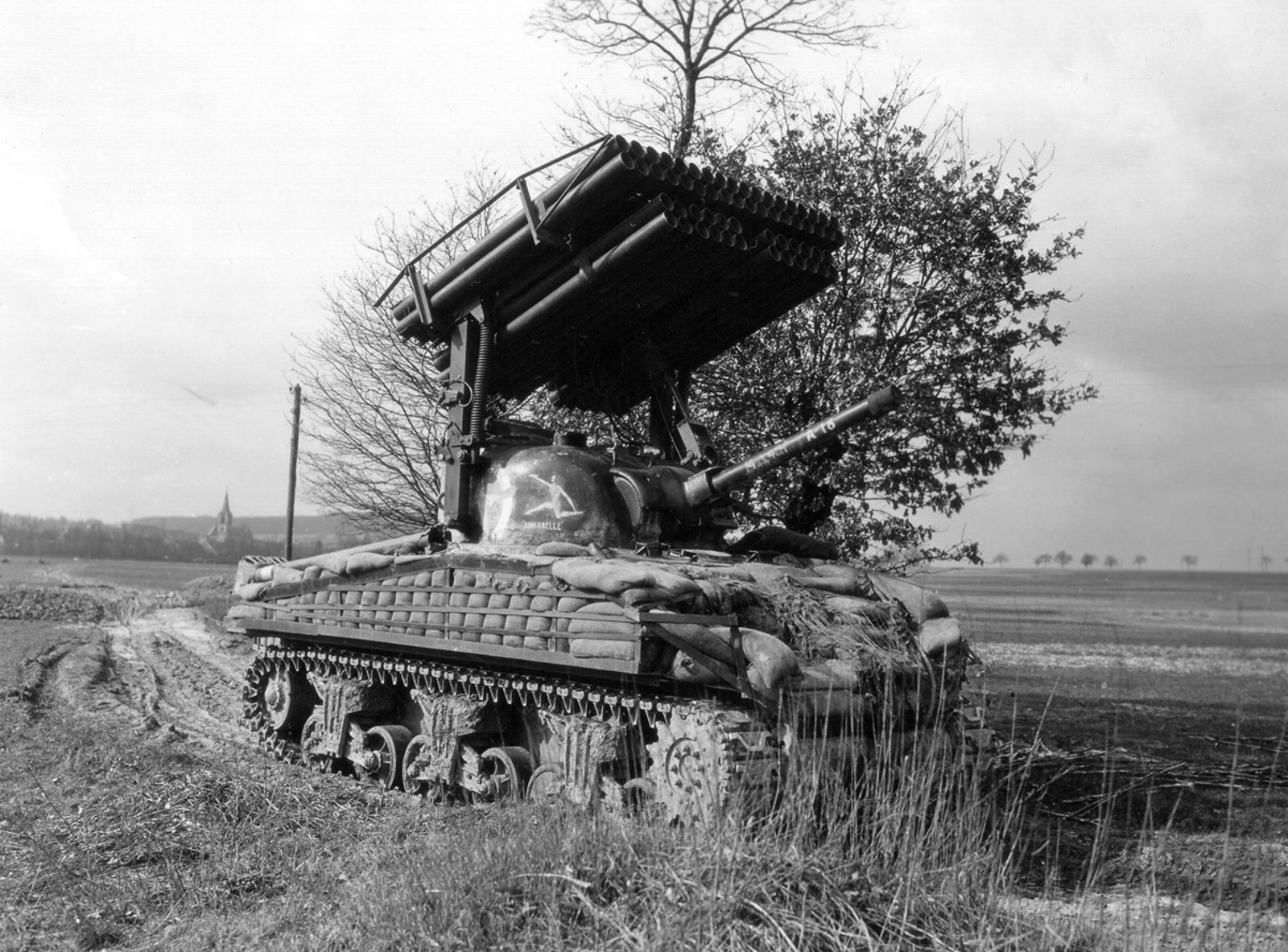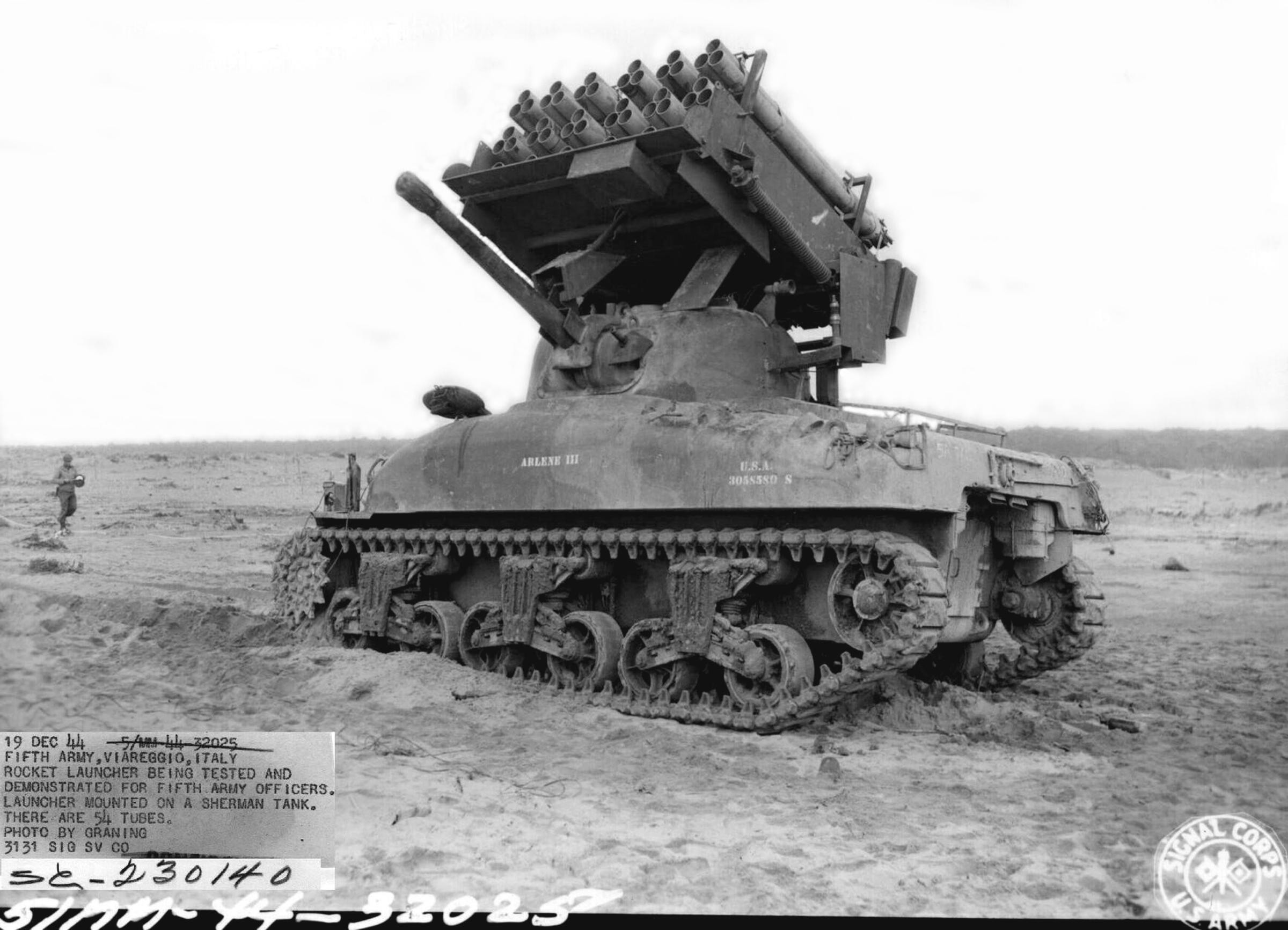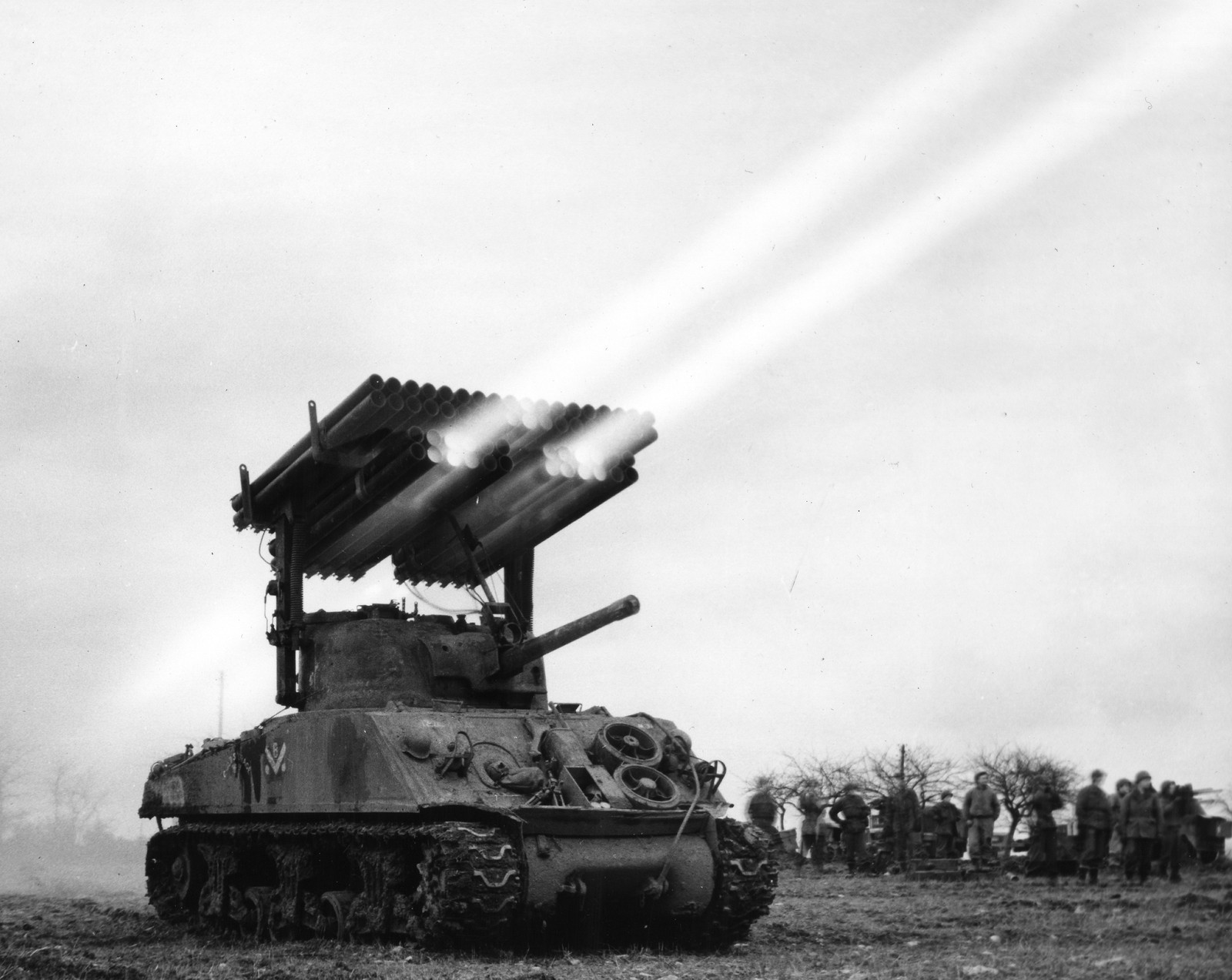Duplex Drives: wow, floating tanks and it worked!
The Duplex Drive Sherman story starts with the British. They came up with the idea of making a canvas skirt system for a tank and tried it on the Valentine tank. It worked so well they went on to try it on their M4A2s, and then on the M4A4s. They worked so well when they were shown to the US Army in a demonstration, the US Army was so impressed they decided to they would use some for the coming D-Day invasion. They had planned on just using Sherman tanks with deep wading kits and LSMs. They would use both.
Though any version of the Sherman could be converted if the M4A4 could, the US chose to only use M4A1 tanks. They wanted the most modern version they could get for the conversions the M4A1 76w, but the first 150 of these tanks were reserved for use in England for crew familiarization. They got M4A1 75 tanks, some late large models in the batch. At first, they thought the conversions could be done in England, but the complication of moving the air cleaner to the inside of the engine compartment made the conversions complicated enough it was decided to build and install the kits on tanks in the US, and the M4A1s were there waiting.
The kits were engineering marvels, if not a little fragile, they still worked very well. I think the impression they were failures comes from a single battalion that mostly sank on D-Day, but they launched into conditions that were known to be very dangerous for the tanks. All the other D-Day DD battalions had the vast majority of their tanks make it into shore just fine and then help a great deal on the landing beaches. The kit was made from a steel frame with rubberized canvas skirts. They were raised by inflating them. There was a little air pump mounted on the right rear of the tank’s engine deck that kept the inflatable parts inflated. Much of the structure that supported the canvas skirts were made of inflatable ribs.
The tank was propelled in the water by a pair of propellers built into a modified idler wheel mount. I don’t think they had a ruder of any kind and the tank was steered by braking with one track or the other. The British converted tanks were slightly different and had sprocket teeth added to the idler. On the American conversions, these sprocket teeth were found to clog with sand and cause tracks to be thrown, so they were removed from the entire run of American made DD tanks. The kits included periscope extensions for the driver and commander so the tanks could, in theory, be operated buttoned up. There were extensions for the head and taillights for use in training only and extensions to the controls so the tank could be driven from outside. While in the water all DD conversions could make 4 ½ MPH.
In use, the biggest drawback was how fragile the skirts were both in and out of the water. Even a small tear would cause the DD to sink. There were several cases of DDs being lost because they tore their skirts driving off the ramp of an LCT. They were also vulnerable to bad weather, and the weather on D-Day was not ideal. It was only deadly for one tank battalion through. The American 741st tank battalion launched 32 DDs 5000 yards from Omaha beach, 1000 more than ideal, into very rough surf conditions. 27 of the DD sank, 3 three from damage to their skirts, the rest foundered in the rough seas. They had it by far the worst accounting for most of the lost DD tanks. Of the 122 total launched, this total is all the DD tanks, British and American, 36 were lost, and that includes all the tanks from the 741st. When they were used in other landings later in the war they had a better success rate. They also came up with metal flaps to cover the screen when it was down, to protect it from being torn on just about anything.
For more detailed info, check out the info on the Sherman Minutia Site.
M4 105 with dozer kit.
Dozers:
Dozers got so big, it has its own post! Click here to go to it.
Hedge Row cutters:
Hedge Row cutters were developed during the fighting in the hedgerows of Normandy, They were basically sections of tank traps from the beach, cut into crude cutting blades and mounted to the front of a Sherman tank. They allowed the Sherman to charge through a hedgerow, cutting a Sherman wide hole through it. They probably looked scary to the Germans too.
Calliope: A Sherman with Rockets!
The E9 kit:
Sources: Armored Thunderbolt by Zaloga, Yeide’s The Infantries Armor, and Steel Victory, Sherman by Hunnicutt, The Sherman Minutia Site, Son of a Sherman by Stansell and Laughlin, M4 Sherman tank at war by Green







I don’t believe the matter was as clear cut as you indicate. No one violated their orders.
The limitations of the DD design were known by all involved, and both Army and Navy personnel knew that the original intent of launching the DDs offshore might be foiled by weather. The XO of the 743d Tank Battalion, charged with training the DD companies slated for both Omaha and Utah Beaches, reported that the DDs’ employment was limited to “Force 3 wind and sea” in a 30 Apr 44 report. That same day, LT Rockwell (USN), charged with training the LCTs that would carry the DDs, formally raised the issue of who would make the final weather decision for launching. This was over two months before D-Day.
Force O’s Neptune order of May 44 included this passage: “Weather permitting, launch DD tanks about 6000 yards offshore and land them at about H-10 minutes. If state of sea is such as to prevent their being launched and proceeding to the beach under their own power, land them with the first wave.”
The Army and Navy came to an agreement before the operation that the final say in launching would be up to the Army. The only point of contention was who in the Army would decide. The Navy wanted one Army officer to decide for both tank battalions (the 741st and 743d). The Army wanted each battalion to have the flexibility to decide for itself. In the end, the Army won. For the 743d, CPT Elder (senior of the 743d’s DD tank company commanders) was designated. For the 741st, CPT Thornton was designated.
At 0505 hours 6 June, CPT Elder and LT Rockwell (commanding the LCTs carrying the DDs of the 743d) conferred and agreed not to launch their DDs. CPT Thornton conferred with his fellow 741st DD company commander by radio, and they decided the risk was worth the potential gain. There is no record what Lt(lg) Barry (commander of the LCTs carrying the 741st’s DD tanks) had to say in the matter; LT Rockwell did not bother to record his subordinate’s opinion in his report.
So the need for a possible weather decision was recognized, and the authority to make that decision was delegated to specific officers, who, in turn, made the decision they were empowered to make. There was no violation of orders. Obviously, one can argue the wisdom of the decisions, but not that they had the authority to make those decisions.
Hope this helps clarify the matter.
Your info on DD tanks is a bit flawed.
The DD tanks that sank off Omaha were launched exactly according to their orders, as planned, 5km off the beach. Of those 32 tanks, 27 sank.
The other units violated their orders and launched much closer in to the beach. I believe on some beaches the DD kit wasn’t used at all and they were brought right up. So, the proportion that actually swam in as planned was much lower than you’ve suggested.
Another hint that the DD kit was not a good idea is that no one has revived this idea since 1945. There are some purpose-built amphibious AFVs but no one tries to make real tanks float any more.
However the original M2/M3 Bradley IFV/CFV used a similar skirt to swim until the ODS versions, and the M551 Sheridan also used a skirt to swim